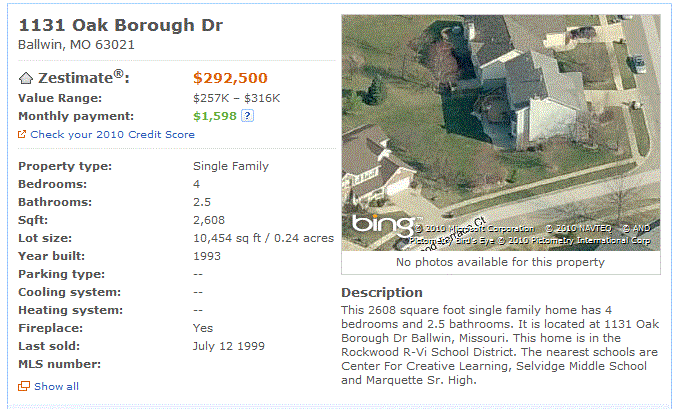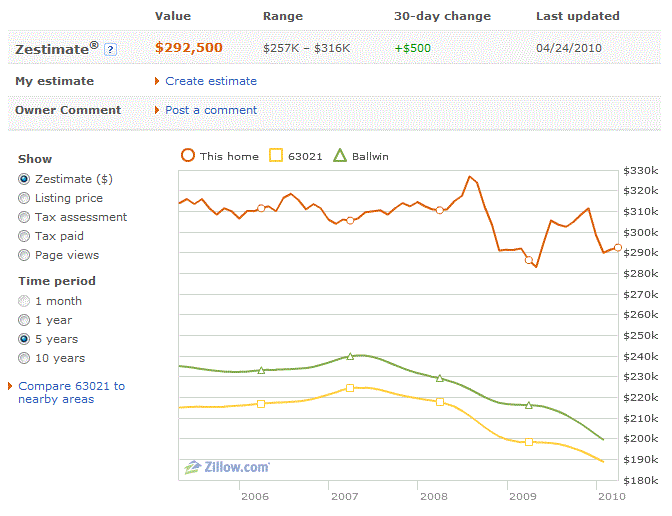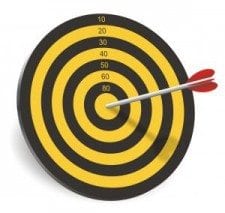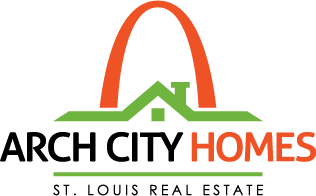
Most real estate agents don’t like Zillow.
Initially, I think it was a reaction to losing control. For years, agents where the keepers of the housing data. Buyers and sellers had to call an agent when they were trying to determine the value of a home. Public tax records offered the sale price of properties, but they didn’t include much information to tell you how that house might compare to your house. And often the public tax records weren’t online, so getting the information meant a trip the the county records office.
Then came Zillow.
Zillow offers visitors a database of property information across the U.S. They aggregate information from multiple sources including tax records and home sale advertising. They even allow property owners to add additional information to a listing.
Zillow then crunches the information and spits out an estimated home value.
Margin of Error
The site clearly informs visitors that there is a margin of error on every home value, and they give a high and low range in addition to the estimated home value (Zillow calls their home value estimates “Zestimates”).
Depending on the city, the range might be narrow or quite large since the margin of error varies from city to city.
Since the information available to Zillow is incomplete, there is no way that their computer calculations can provide a definitive value. They even claim on their own site that the Zestimate is only designed to give you a starting point for evaluating the value of a home.
What’s a Zestimate?
A Zestimate home valuation is Zillow’s estimated market value. It is not an appraisal. Use it as a starting point to determine a home’s value.
They don’t have information on if the home is updated or not. They don’t know if the house backs to a busy street or to power lines. They don’t factor in that the owners painted the shutters pink and the front yard doesn’t have any landscaping.
And they base their information off of information found in the tax records…which often reports square footage, bedrooms and bathrooms incorrectly.
How accurate are Zillow’s estimates for St. Louis homes?
This section updated 10/28/2011
According to Zillow, they have 99% of St. Louis area properties on their site, and 90% of the properties have an estimated value.
Zillow reports on their accuracy by comparing their latest Zestimate with actual sale price of sold homes.
St. Louis Homes:
- 31.6% of Zestimates are within 5% of the sale price
- 54.6% of Zestimates are within 10% of the sale price
- 75.9% of Zestimates are within 20% of the sale price
They report a margin of error of 8.6% for their St. Louis values.
To put that into real numbers:
- $200,000 sale price
- only 3 in 10 would have been estimated from $190,000 – $210,000
- only half would have been estimated from $180,000 – $220,000
- 3 in 4 would have been estimated from $160,000 – $240,000
The median margin of error would have resulted in a sale price that was $17,000 off of the Zestimate. The margin of error is the medium that the homes differ from the true selling price, so more than half of the homes would have been off more than $17,000 off.
It seems to me that these numbers aren’t very helpful when pinpointing the real value of a particular home. If you did a home search on any local real estate site, you could come up with this range on your own.
See Zillow’s data on their accuracy…
Pricing My New Listing
I have a new listing that will be coming on the market in the next few weeks. It’s a great house in Ballwin with a popular floor plan and is in excellent condition. The homes in this subdivision typically sell pretty easily. In fact, all 4 of the homes which have sold and closed in the last year had an accepted contract in less than 30 days.
Based on a thorough pricing analysis, the owners and I agreed to price the home at $279,900. It’s a fair price – not pushing for an unrealistic price or pricing it so low that it will be guaranteed to sell fast.
Fortunately, my clients understand that Zillow’s estimate is JUST an estimate (Zillow valued the house at $292,500).
If we tried to list it at Zillow’s price, we would still be looking for a buyer 6 months from now. Of course, the range of $257,000 – $316,000 is pretty wide. Seems to me that you could throw a dart at a wall and hit something between those values.
On the other hand, maybe it will help us sell when buyers take a look at Zillow’s estimate and think that they are getting the house for a steal.

Once this house is listed for sale, the Zillow listing will include the advertising remarks and pictures, along with the current listing price.
Update: The home sold for $278,000.

Do you see how Zillow’s value for this home jumps up & down within just a few months? If you are going to use Zillow to get an estimate on the value of your home, you need to focus on this graph more than on the Zestimate on any given day.
What do I think of Zillow?
I think Zillow can be very helpful in aggregating information from various sources so consumers have one place to look for information including the listed price of a home for sale plus tax and pricing history. I think it is helpful to see the overall trends for pricing in an area too.
I also like the tool that allows you to modify the estimate…plugging in projects that have been done or you plan to do (such as a bathroom remodel) to see how home improvements affect the value of a home.
My only complaint is not with Zillow, but with home buyers and sellers who use the Zillow Zestimate as an absolute value rather than a starting point when trying to determine value.








